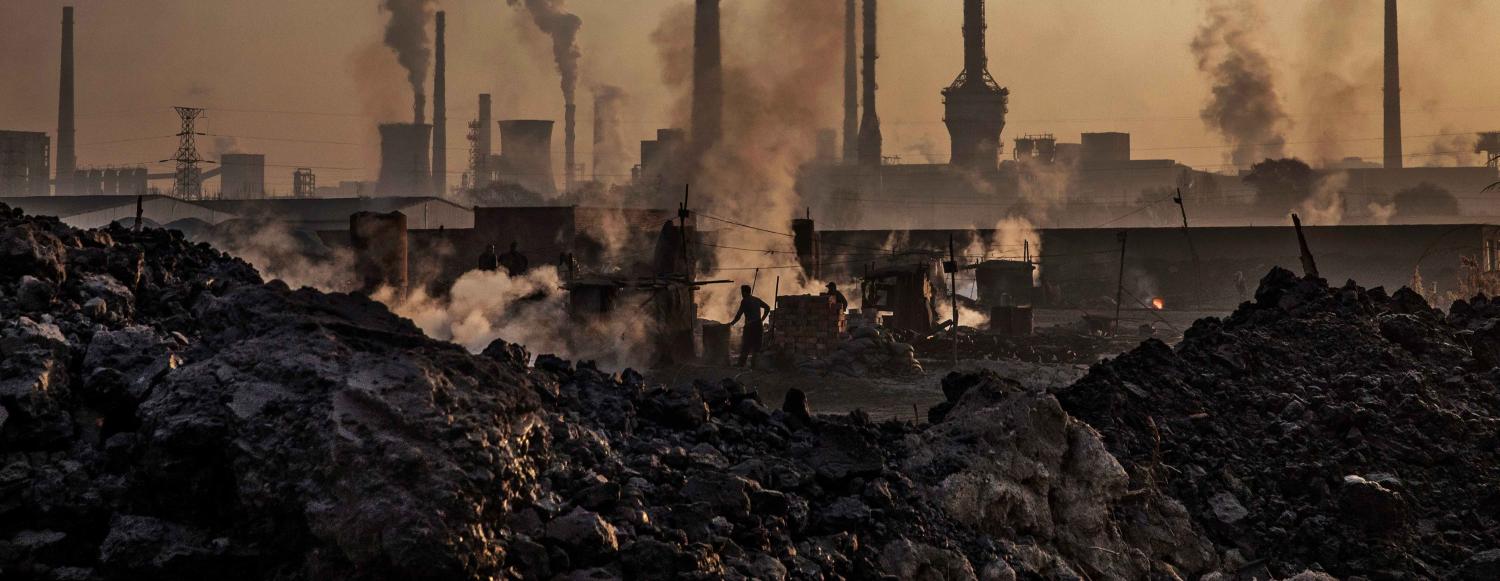It might not have made international headlines, but for energy-watchers, the International Energy Agency (IEA)’s 667-page World Energy Outlook 2016 was a must-read. And if you follow climate change policies (and the transition away from polluting fossil fuels that they represent), your attention will have been drawn to its coal market outlook, and one of its more striking conclusions: in 2015, global coal demand fell 'for the first time since the late 1990s'.
The main culprit for this fall in demand? China, where 'measures to combat air pollution, to shift away from heavy industries and to diversify the power mix' are reshaping the country’s coal use, even as the economy continues to grow. There was also a steep drop in China’s demand for coking coal, which is used in steel production. And perhaps most significantly, the IEA concluded that China already passed 'peak coal' in 2013, and that demand will fall another 13% to 2040.
This peak in Chinese demand is 'an inflexion point for coal', said the IEA’s Ian Cronshaw at the ANU Energy Update in Canberra last week. Or, as the Institute for Energy Economics and Financial Analysis (IEEFA) put it in an analysis, China, 'along with India, is accelerating the global transformation from coal to alternative energy sources, especially solar.'
Indeed, national policies that only a few years ago would have seemed unimaginable (from massive installation targets for solar power, to an absolute cap on China’s total coal consumption and a fixed peak year of 2030 for the country’s carbon dioxide emissions) are now part of China’s push towards what its leaders call an 'ecological civilisation'. It was China's national self-interest that drove much of this progress, rather than international pressure (this may be reassuring to those concerned that US President-elect Donald Trump might undermine the cooperative US-China relationship on climate change seen since 2014). China's leaders want to shift the country’s underlying economic structure, to move to a position of low carbon technology leadership, and to create greater energy security by cutting reliance on imported fuels.
In the words of Hu Angang, a professor at Tsinghua University in Beijing and an influential adviser for China’s economic planners, 'green development is the greatest strategic opportunity of the twenty-first century'. Or, as IEEFA put it, the rise of China and India in the renewable energy industry 'positions them as new clean energy superpowers, outflanking the US, dodging stranded asset risk and powering their economies from limitless energy sources'.
Yet despite the considerable environmental upsides of such a scenario, there are still risks and uncertainties worth considering.
One is that China’s energy-intensive industries find an 'escape valve' for overcapacity in polluting sectors by exporting capital and technology outside China’s borders, driving a carbon-intensive boom in other developing countries. China’s One Belt, One Road strategy that aims to open new markets and supply routes across Central and Southeast Asia and elsewhere - backed partly by new, China-supported financial institutions such as the Asian Infrastructure Investment Bank (AIIB) - runs the risk of aiding and abetting such a trend. For example, Chinese investment has greatly boosted Tajikistan’s cement industry, amid huge overcapacity in the Chinese market. Similarly, loans from Chinese banks have supported coal-fired power plants from Indonesia to Pakistan, Turkey and the Balkans.
Still, hopes might be seen in the draft energy strategy released for consultation by the AIIB, which (as part of its ambition to be 'lean, clean and green') promises to support renewable energy resources 'particularly solar with adequate storage, to develop innovative and transformative projects'. China’s South-South Climate Cooperation fund also supports solar projects in countries with severe energy poverty, such as Myanmar.
And while it doesn’t entirely rule out support for coal, the AIIB suggests this would only be in exceptional circumstances, 'if cleaner technologies are not available for well-founded energy security or affordability reasons'.
In a context where not only the IEA, but even financial institutions like Goldman Sachs see thermal coal in terminal decline, the bigger risk might instead be the knock-on for exporter countries such as Australia, where coal export expansion in the Galilee Basin, for example, has been predicated on continued Chinese demand.
This raises the risk of 'stranded assets'. If the market for a resource declines significantly, the impact is felt not only by shareholders, but also potentially by others affected by the systemic financial risks of a so-called 'carbon bubble'. This would include the taxpayers that often help subsidise the upfront cost of export infrastructure, such as rail and ports. In the face of such potential risks, it’s worth at least considering this under-reported publication, a joint effort from Carbon Tracker and the Climate Institute.
